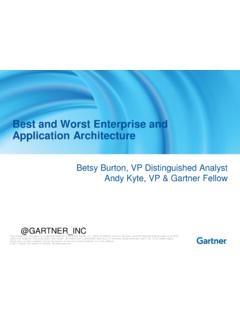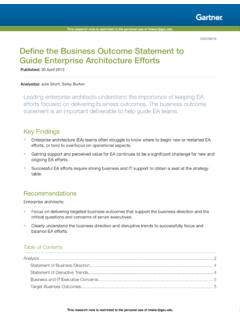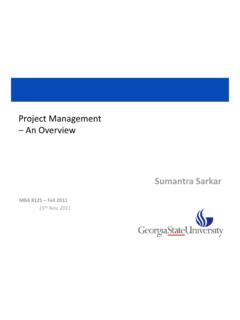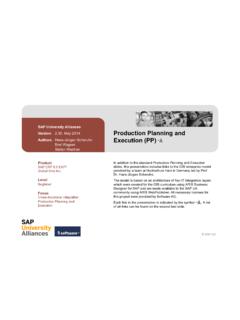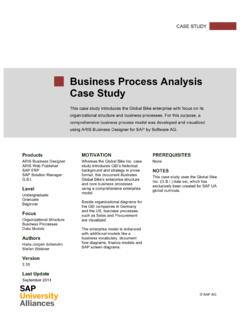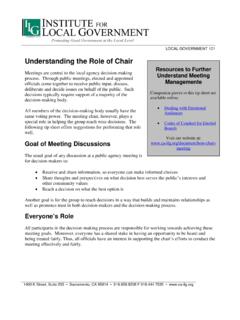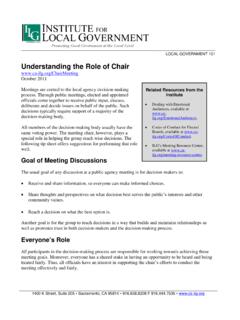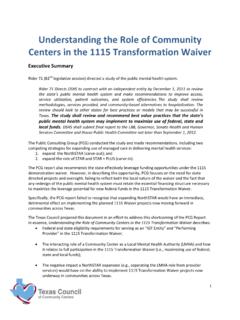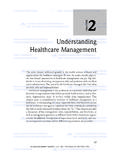Transcription of Understanding the Role and Importance of Gateways in …
1 Understanding the Role and Importance of Gateways in BPMN +44 (0) 870 991 1851 David Jones and Rod Brown September 2012 White Paper Page 2 10 Steps to follow before Initiating a TOGAF 9 Project or Initiative Understanding the Role and Importance of Gateways in BPMN +44 (0) 870 991 1851 Introduction In our last White Paper, we showed why Events have been one of the distinctive features of BPMN since the beginning and providing a key point of difference between documenting business processes with BPMN over the more traditional approaches to process modeling or mapping. However, one of the common points of confusion for people learning any version of BPMN is that of Gateways . This is because Gateways essentially look like the Decision Diamonds in traditional process mapping approaches used previously to document processes. In this White Paper, we will discuss the Importance and the role of Gateways in modeling your processes using BPMN by explaining: The role of Gateways in BPMN in terms of what they are, why we need them as well as what they are used for; The different types of Gateways available in BPMN and how they are commonly used; and Some best practice recommendations in how to name and use Gateways in your business process modeling.
2 The role of Gateways in BPMN What are Gateways in BPMN? Although Gateways have been part of BPMN since Version , they have changed a little since then. However, we are only going to concentrate on BPMN The OMG s BPMN specification describes Gateways as: Gateways are used to control how the Process flows through Sequence Flows as they converge and diverge within a Process. If the flow does not need to be controlled, then a Gateway is not needed. The term gateway implies that there is a gating mechanism that either allows or disallows passage through the Gateway. i The modern analyst defines Gateways as: A Gateway is a BPMN process modeling element used to control how sequence flows interact as they converge and diverge within a process. The term gateway is used to signify a mechanism by which something is either allowed or disallowed through. A gateway is represented as a diamond.
3 Unlike activities, Gateways do not represent work being done within a process flow. ii Page 3 10 Steps to follow before Initiating a TOGAF 9 Project or Initiative Understanding the Role and Importance of Gateways in BPMN +44 (0) 870 991 1851 What do we use Gateways for? Gateways are the way in which you control sequence flow in a process in BPMN. This is because of the need to: Route a sequence flow following a decision, using an exclusive or inclusive gateway; or alternatively Undertake activities in parallel, using the parallel gateway. As we mentioned earlier, Gateways are a cause of confusion for many people learning BPMN. Why? This is because, as we also mentioned before, Gateways are shaped like the Decision Diamonds used in traditional process mapping and inexperienced users believe that Gateways are equivalent to Decision Diamonds. Unfortunately, this is not the case.
4 In traditional process mapping, Decision Diamonds are involved in the evaluation of the decision as well as the routing based on the outcome. However, in BPMN, Gateways only route outcomes already evaluated, they do not include or undertake any activity. The BPMN Specification explains: The main difference is that Gateways do not represent work being done and they are considered to have zero effect on the operational measures of the Process being executed (cost, time, etc.). iii Consequently, in BPMN, decisions need to be evaluated in the Activities immediately before the Gateway. Types of Gateways in BPMN Overview In explaining the different types of Gateways , we will make reference to the Object Management Group s BPMN specification rather than be influenced by personal interpretations. As we explained in our previous White Paper, the Object Management Group published the BPMN specification in 2011 and set out the representation for each gateway.
5 Unlike the three different types and myriad of sub-types of events, there are only 6 types of Gateways : Exclusive Gateways ; Inclusive Gateways ; Parallel Gateways ; Event Based Gateways ; Parallel Event Based Gateways ; and Complex Gateways . Page 4 10 Steps to follow before Initiating a TOGAF 9 Project or Initiative Understanding the Role and Importance of Gateways in BPMN +44 (0) 870 991 1851 Of these, the first three are those commonly used, Exclusive Gateways , Inclusive Gateways and Parallel Gateway. Although the Exclusive Gateways , Inclusive Gateways and Parallel Gateway are relatively straightforward to understand and use, the Event Based Gateways and Parallel Event Based Gateways are certainly very useful in the right circumstances and you should look at adding them to your process modelling repertoire as you become more comfortable using Gateways . Exclusive Gateway The Exclusive Gateway is used to create alternative paths within a Process flow.
6 It is the diversion point in the road for a Process. The Exclusive Gateway represents the need to make a decision where only one of the paths can be taken. An Exclusive Gateway is graphically represented in BPMN as a diamond with a single line and usually no X, as shown below: Figure 1: BPMN Symbol for an Exclusive Gateway Inclusive Gateway The Inclusive Gateway is used to create both alternative and parallel paths within a Process flow. The Inclusive Gateway represents the need to make a decision where all conditions must be evaluated. Whilst the Inclusive Gateway can be used to show that all paths must be taken, it should be used in such a way that at least one of the paths is taken. An Inclusive Gateway is graphically represented in BPMN as a diamond with a single line and a circle inside as shown below: Figure 2: BPMN Symbol for an Inclusive Gateway Parallel Gateway The Parallel Gateway is used to represent parallel paths in a process.
7 The Parallel Gateway does not check any conditions and will wait for all incoming flows before triggering the parallel path. A Parallel Gateway is graphically represented in BPMN as a diamond with a single line and the plus symbol inside as shown below: Page 5 10 Steps to follow before Initiating a TOGAF 9 Project or Initiative Understanding the Role and Importance of Gateways in BPMN +44 (0) 870 991 1851 Figure 3: BPMN Symbol for a Parallel Gateway Event Based Gateway The Event-Based Gateway represents a branching point in the Process where the alternative paths that follow the Gateway are based on Events that occur rather than the evaluation of the process flow that lead to this point. A specific Event such as the receipt of a message from a customer, determines the path that will be taken. An Event Based Gateway is graphically represented in BPMN using a pentagon marker inside a double line circle, inside a diamond with a single line as shown below: Figure 4: BPMN Symbol for an Event Based Gateway Complex Gateway The Complex Gateway is used to represent complex synchronization behavior in a process.
8 A complex gateway is used when one or more of the outgoing sequence flows from the decision may be taken. The Complex Gateway must have a default path. The complex gateway is an element that would be used more in executable modeling than analytical modeling and may make more sense when used to describe a complex merge. The condition would determine when the next task would start. Figure 5: BPMN Symbol for a complex Gateway Demonstrating the role of Gateways Overview The best way to demonstration the capabilities and Importance of Gateways is to look at sample process models. We have taken the examples shown here from the BPMN by Example document published by the Object Management Group (OMG)iv. Page 6 10 Steps to follow before Initiating a TOGAF 9 Project or Initiative Understanding the Role and Importance of Gateways in BPMN +44 (0) 870 991 1851 Example 1 In our last White Paper on Events, we included a Pizza Order and Delivery example.
9 This example also provides a good example use of Gateways : Figure 6: Pizza Order and Delivery Example (using the free iServer BPMN stencil) Example 2 The following Process provides a more appropriate example that demonstrates the most common types of Gateways : Figure 7: Shipment Process of a hardware retailer (using the free iServer BPMN stencil) Page 7 10 Steps to follow before Initiating a TOGAF 9 Project or Initiative Understanding the Role and Importance of Gateways in BPMN +44 (0) 870 991 1851 Best Practice Recommendations Recommendations for Exclusive Gateways Exclusive Gateways are one of the key Gateways used in process modeling as they provide the mechanism for routing decisions ( require the choice of one path from the set of available paths), consequently it is typically the most commonly used Gateway. They should be used whenever a single path through a Gateway is required after a condition has been evaluated in the previous Activity.
10 Recommendations for Inclusive Gateways Although Inclusive Gateways are not as commonly used as Exclusive Gateways , they can be useful when you require one or more of the paths to be used after a condition has been evaluated in the previous Activity. Recommendations for Parallel Gateways Parallel Gateways do not provide routing based on decisions. Instead, a Parallel Gateway provides the mechanism in Process Modeling to allow multiple paths to be undertaken in Parallel. Consequently, their use is limited to circumstances where multiple paths are needed to be executed in parallel and to re-joining these multiple paths back together. Recommendations for Event Based Gateways Event Based Gateways provide the means of routing a Process based on waiting for the occurrence of one of two or more events. Although they are not commonly used, there are circumstances when Event Based Gateways are useful.

